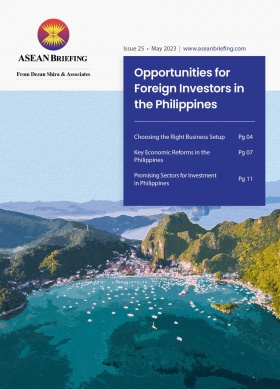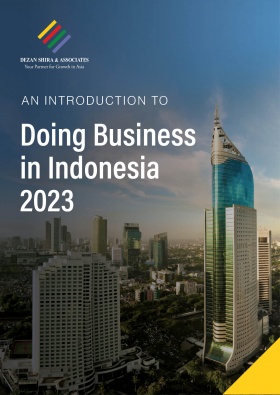The Rise of Chinese Capital: Impact on ASEAN’s Manufacturing Landscape
Amid evolving dynamics in Asia’s supply chain and labor markets, extensive discussions have unfolded regarding the notable shift of manufacturing operations to Southeast Asian countries. While much of this discourse has traditionally centered around foreign companies relocating from China in pursuit of cost-effective alternatives, a compelling aspect often overlooked is the surge in such endeavors by Chinese corporations themselves.
Driven in part by rising domestic wages and operational costs, Chinese companies have increasingly directed their investments towards the manufacturing sector in ASEAN countries. What was once a less pronounced trend has rapidly transformed, reflecting a strategic recalibration of Chinese business interests and a major shift in where the majority of global manufacturing takes place.
The significance of Chinese investment in ASEAN’s manufacturing landscape is underscored by the fact that China holds the position of ASEAN’s largest trade partner, and is fast becoming one of the most important sources of investment in the region.
To better understand this evolving relationship, we take a look at China’s overseas direct investment (ODI) in ASEAN and expansion into various sectors of the region’s manufacturing industry.
Overview of Chinese ODI in ASEAN
China is the third largest source of foreign direct investment (FDI) inflows into ASEAN countries, after the US and the EU, with total FDI reaching US$18.65 billion in 2022.
According to the 2022 Statistical Bulletin of China’s Overseas Foreign Direct Investment (the “Statistical Bulletin”), this sum accounted for 11.4 percent of China’s total overseas direct investment (ODI) that year and 15 percent of ODI flows to Asia. The ODI stock at the end of the year was US$154.66 billion, accounting for 5.6 percent of the total stock and 8.4 percent of the investment stock in Asia.
By the end of 2022, China had established more than 6,500 directly-invested companies in ASEAN, employing more than 660,000 foreign employees.
As of 2022, cumulative two-way investment between China and ASEAN exceeded US$380 billion.
Singapore has historically been and remains by far the biggest recipient of Chinese ODI in the ASEAN region, and is the fifth top destination for Chinese investment in the whole world. China’s total ODI into Singapore in 2022 reached approximately US$6.3 billion, accounting for 33.5 percent.
Although Singapore remains the main destination for Chinese ODI, other ASEAN countries are slowly catching up. In terms of Chinese ODI stocks in ASEAN countries, Singapore’s share has shrunk slightly from around 50 percent in 2017 to around 47 percent in 2022. Meanwhile, Indonesia’s share has grown from 11.9 percent to 15.9 percent over this period and Malaysia’s grew from 5.5 percent to 7.8 percent.
This shift is indicative of the growing attraction of countries such as Indonesia, Malaysia, Vietnam, and Thailand to Chinese investors, many of whom are seeking lower-cost manufacturing options as domestic wages and operational costs continue to rise.
Chinese ODI in ASEAN’s manufacturing industry
The manufacturing sector accounts for the lion’s share of Chinese ODI in ASEAN. In 2022, Chinese ODI in the manufacturing sector reached US$8.2 billion, accounting for 44 percent of total ODI flows into the region. Meanwhile, ODI stocks in the manufacturing sector reached US$49.28 billion, accounting for 31.9 percent of the total.
While Chinese ODI into ASEAN’s manufacturing sector decreased by 4.7 percent year-on-year, the trend over the past decade has been one of rapid growth. Between 2013 and 2022, Chinese ODI in ASEAN manufacturing grew at a CAGR of 21.3 percent. Manufacturing also became the top target of Chinese investment by total stocks in 2016, overtaking leasing and business services.
According to the Statistical Bulletin, Chinese investment primarily went to the manufacturing industries in Singapore, Thailand, Indonesia, and Malaysia.
Chinese investment in EV manufacturing and renewables
While there is no comprehensive data on Chinese ODI in ASEAN’s electronic vehicle (EV) manufacturing and renewables industries, developments in recent years strongly suggest that Chinese companies are expanding their presence in ASEAN countries.
Multiple Chinese automakers have established manufacturing plants in countries such as Indonesia, Malaysia, Thailand, and Vietnam in particular, while also investing in local EV and automobile companies.
In 2022, Chinese battery giant CATL announced a joint venture worth US$5.9 billion with Indonesia’s ANTAM to develop nickel mining and processing, battery material, battery manufacturing, and battery recycling capabilities. Indonesia has rich nickel deposits, a crucial material for producing EV batteries.
In early 2023, it was revealed that Chinese EV manufacturer BYD will build an EV plant in Vietnam, which will produce components to be shipped to another plant in Thailand.
Also in 2023, Chinese EV maker Geely announced it will invest US$10 billion in Proton, Malaysia’s national carmaker, which includes investment in new headquarters for Proton. It was later revealed that Geely and Proton were also considering setting up an EV factory in Thailand.
Chinese companies’ interest in ASEAN’s EV industry is not solely as a location to establish factories, but also as a growing consumer market. While ASEAN’s auto market has historically been dominated by Japanese models, Chinese brands are catching up, in particular in the field of EVs.
For instance, among the top five fully electric car models in Thailand in 2022, four were Chinese, represented by the companies Great Wall Motor, SAIC Motor, and BYD, according to Director of the China-ASEAN Research Center Tang Zhimin.
In addition to EV manufacturing, ASEAN’s renewables industry has become a magnet for Chinese investment. Chinese investment has taken both the form of establishing plants for renewable products such as solar panels, but also major renewable projects helping to develop the region’s renewables capacity.
China is the world’s largest producer of solar panels and wind turbines and also has large deposits of rare earth metals used for their production. At the same, while many ASEAN countries have significant potential for the adoption of renewables, most are yet to unleash that potential fully.
Chinese energy companies are therefore in a particularly strong position to fill this gap, and countries such as Indonesia are even actively seeking Chinese investment.
The last few years have seen several major deals and projects announced by Chinese renewable companies in ASEAN, further expanding their footprint in the region.
JinkoSolar, a Chinese solar manufacturer, has long had manufacturing facilities in Malaysia and has more recently expanded its presence to Vietnam.
In January 2023, nine Chinese energy companies committed to a total US$13.76 billion investment in the Philippines’ renewable energy sector, covering the solar, wind, and energy storage sectors, after the country announced it would lift caps on foreign ownership.
In April of the same year, China’s state-owned Power Construction Corp of China (PowerChina) announced the completion of a 350 MW-capacity wind farm in southern Vietnam, China’s largest offshore wind project in Southeast Asia to date.
In October, Chinese photovoltaic company LONGi announced it would build a solar panel factory in Malaysia, with a total investment of US$380 million.
About Us
ASEAN Briefing is produced by Dezan Shira & Associates. The firm assists foreign investors throughout Asia and maintains offices throughout ASEAN, including in Singapore, Hanoi, Ho Chi Minh City, and Da Nang in Vietnam, in addition to Jakarta, in Indonesia. We also have partner firms in Malaysia, the Philippines, and Thailand as well as our practices in China and India. Please contact us at asean@dezshira.com or visit our website at www.dezshira.com.
- Previous Article Indonesia and Singapore Implement QR Linkage Payment
- Next Article Potential Pact for EV Minerals Between U.S. and Indonesia








